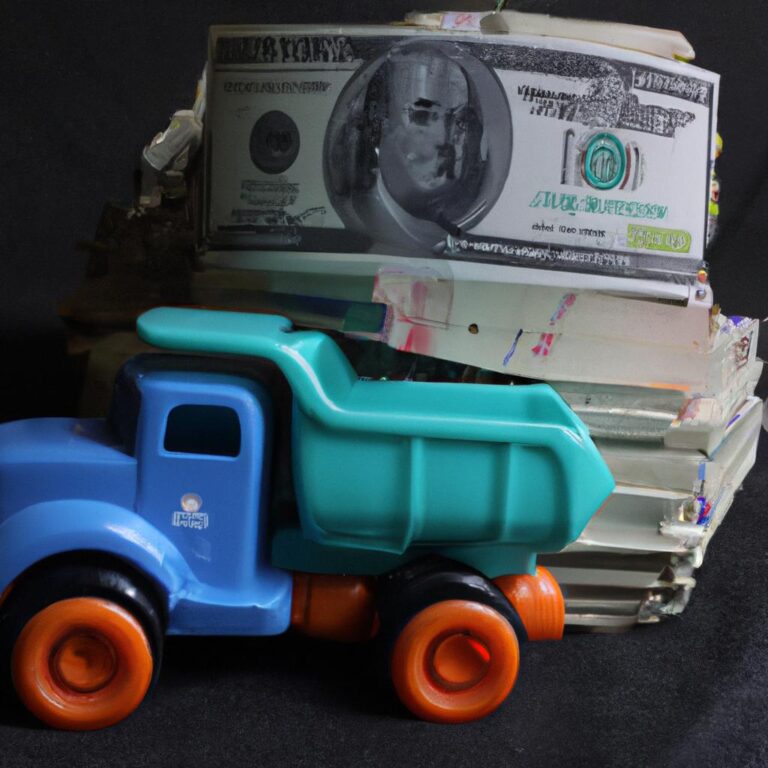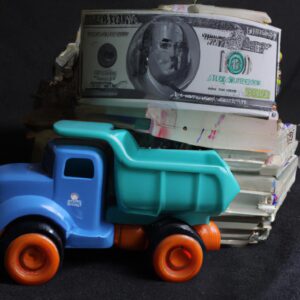Introduction
Toys are an important part of any child’s life. Not only do they provide hours of fun, they also help stimulate the imagination and promote imaginative play. It should come as no surprise then that toy companies have had a major impact on the industry in the past few decades.
In this guide we will explore the history of toy companies, their impact on the market, design innovation, production and distribution, social impact, challenges for toy companies, and the overall conclusion of the findings.
From small, family-run businesses to major corporations, toy companies have diversified to meet the needs of a constantly changing market. Through innovation and creativity, these companies strive to create products that will capture the attention of children and adults alike.
We will look at all of these factors and more to understand how toy companies have impacted the industry and what this means for the future of the toy industry.
History of Toy Companies
The toy industry has been around for centuries, with some of the most iconic toy companies in existence today starting out in the 1800s or early 1900s. Such notable companies include Hasbro, Mattel, Lego, Fisher-Price, American Girl, and more. These companies have experienced a tremendous amount of growth over the years, each making their own contributions to the toy industry and defining the market through their products.
Hasbro, founded in 1923, started out as a small business specializing in selling paper goods and puzzles. By the mid-1930s, they had expanded their product line to include dolls and board games. Fast forward to today, and they are behind some of the most popular toys on the market, such as Monopoly, My Little Pony, Nerf, Transformers, and more.
Mattel is another pioneering company in the toy industry, having been around since 1945. Back then, the company was known for creating simple coloring books and dollhouses, but they eventually grew into one of the largest toy makers in the world. Some of their best-selling products include Barbie dolls, Hot Wheels cars, Fijit Friends figures, and Uno card games, to name a few.
Lego, founded in 1932, is another iconic toy brand that has become extremely popular all around the world. From building blocks to action figures, this company manufactures some of the most creative and beloved toys on the market.
Fisher-Price, founded in 1930, is a US-based company that produces educational toys for young children. They are known for their educational and interactive toys, such as the Laugh & Learn Kitchen Set, Little People Farm Set, and more.
American Girl, founded in 1986, is another notable toy company that specializes in dolls designed for young girls. Their dolls often come with unique features, such as accessories and stories associated with them.
These are just a few of the many companies that have made an impact on the toy industry over the years. Each of these companies has helped to shape the market in different ways and play a major role in its continued success.
Impact on the Market
Toy companies have had a huge influence on the market, from changes in product variety to price inflation. Many toy companies use advertising strategies to promote their products and help them stand out from the competition.
Price inflation is caused when toy companies are under pressure due to increased demand for certain toys. This can result in higher prices for popular items, as toy makers are able to charge more for a short-term spike in demand.
Product variety has also seen changes due to toy companies. New varieties of existing products or completely new products entering the market helps keep consumers interested in the toy industry. Through innovation, toy companies are often able to create the next hit item.
Advertising strategies are also closely linked with the success of any toy company. Companies look to create marketing campaigns that will reach the intended target audience and help show off their products. Television advertisements, magazine spreads, and even viral online campaigns are all possible methods used by toy companies.
Design Innovation
Innovation plays a large role in the success of toy companies, as they must continuously think of ways to improve their products and attract new customers. Over the years, toy companies have used design technology to create products that are safer and of higher quality. In particular, the development of 3D printing has enabled toy companies to manufacture items faster and more efficiently by reducing costs while still maintaining quality.
As well as making use of advanced technology, many toy companies strive to boost eco-friendliness by using sustainable materials. For instance, many companies have switched from traditional plastic plastics to bioplastics, which are made from natural materials like cornstarch. This is important as it helps to reduce damage to the environment and conserve resources.
By introducing innovative designs, toy companies are able to provide a larger selection of toys for consumers. This is beneficial as it gives people more options when choosing toys for their children, allowing them to customize their experience. Additionally, improved designs have led to an increase in safety, as there are now toys that adhere to standards set by regulatory bodies such as the Consumer Product Safety Commission (CPSC).
Production and Distribution of Toy Companies
The production and distribution of toys involves many steps in order to deliver them to customers. This process typically starts with product design, which is the first step in determining how the toy will look and function. Once the design is complete, a manufacturer is chosen to bring the product to life. This could involve using a variety of materials and processes, such as injection molding, 3D printing, painting, or assembling the toy by hand. After the toy is produced, it is then shipped to warehouses or retailers for distribution.
Many toy companies outsource production to other countries in order to reduce costs, which helps keep their products competitively priced. Shipping logistics are also an important factor, as proper packaging and labeling must be used in order to ensure that the toys arrive at their destination safely. Logistics companies may be employed to manage shipping and delivery of the toys.
Toy companies must also consider the cost of materials, labor, production, and distribution, as these costs can add up quickly. This is why it’s important for toy companies to maintain good relationships with their suppliers and distributors. By doing so, they can secure more cost-effective terms, which can help them stay competitive in the marketplace.
Social Impact of Toy Companies
Toy companies can have a large impact on the social landscape, both in terms of job markets and economic benefits, as well as environmental concerns. On the one hand, toy companies provide jobs for people, either directly in their factories or for those involved in the production and shipping process. On the other hand, they can also have an effect on the environment, due to the materials used in producing toys and the emissions created from transportation. In order to better understand the social impact of toy companies, it is important to look at both sides.
Job Markets
Toy companies can create job opportunities both in their own production facilities and in the supply chain. Many factories are set up in lower-income countries, where wages are relatively low, providing much needed employment. Additionally, a whole host of other people are employed in the production and shipping process, such as distributors, truck drivers, and warehouse personnel.
Economic Benefits
The economic impact of the toy industry has been felt around the world. The industry is estimated to be worth more than $80 billion, providing a significant source of income for many countries. Additionally, the industry contributes significantly to GDP in many countries, creating economic growth.
Environmental Concerns
While the toy industry offers many benefits, it also has some drawbacks. The manufacturing process for toys requires a significant amount of raw materials, which can have an impact on the environment. Additionally, the shipping process generates greenhouse gas emissions, further contributing to environmental degradation.
Overall, the social impact of toy companies is a complex issue that needs to be examined from multiple angles. While there are positive aspects to the industry, there are also negative ones that need to be considered when looking at the overall impact.
Challenges for Toy Companies
In the toy industry, companies face a variety of challenges that can threaten their success. These include competition from other companies, access to renewable resources, and rising costs of production.
Competition in the toy market is fierce, as new companies are always entering the fray. Established firms may find that they are unable to keep up with trends in design and technology, leading to significant losses in market share. Additionally, new firms may offer lower prices, leading to further loss of profits for existing companies.
Access to renewable resources can also be difficult for toy companies. Many toys require certain materials, such as plastic, wood, or cotton. However, these resources may not always be easily acquired due to environmental regulations, cost, or limited availability. As such, companies must strive to find alternative sources of materials, or risk losing out on potential profits.
The cost of production is another major concern for toy companies. As prices increase for materials and labor, companies may find it difficult to remain profitable. Additionally, the market for toys is often highly saturated, meaning that companies may have to cut prices in order to remain competitive. Unfortunately, this can lead to reduced profit margins for toy companies.
In conclusion, toy companies face a variety of challenges in the marketplace, including competition, renewable resources, and rising costs of production. It is important for companies to be aware of these challenges so that they can take measures to address them.
In conclusion, toy companies have a significant impact on the industry. The history of toy companies demonstrates how much they have evolved and thrived in a competitive marketplace. Their impact has been seen in how they shape the market, pushing prices up, offering diverse product varieties, and utilizing effective advertising strategies. Design innovation has improved product quality and safety, while production and distribution processes have been improved with the help of outsourcing and shipping logistics. At the same time, toy companies are responsible for providing jobs, economic benefits, and environmental concerns. Despite all the advances, there are still challenges that companies must face to maintain their success, such as competition, cost of production, and access to renewable resources. This article has examined many aspects of toy companies and their overall impact on the industry.
Ultimately, toy companies play an important role in the modern industry, whether it’s through shaping the market, providing jobs, or innovating design. As the industry continues to evolve, toy companies must manage these challenges to remain successful and viable players in the market.
When writing about any topic, it is essential to offer sources that can be used for verification. For this guide, all sources must be referenced in accordance to MLA and APA guidelines. It is important to include the author of the source, the year the source was published, the title of the specific source, the website or page the source was found on, and the URL or DOI (if available). This allows readers to find the source and gain further insight into the specific topics discussed in this guide. The goal of citing sources is to provide a solid foundation of facts and research to ensure the validity of the information being provided.
Toy companies have had a long and storied history, with notable players in the industry like Mattel and Hasbro having made significant impacts on the market. Many of these companies have actively pursued innovative designs, ensuring their products are of high quality and safety standards. Additionally, they have developed production and distribution processes that allow them to make the most of their resources while shipping products out efficiently. The impact of toy companies has had social implications as well, generating job markets and providing economic benefits. Despite this, there are still challenges that present themselves to toy companies, such as competition, renewable resources, cost of production, etc.
In conclusion, toy companies have been an integral part of the industry for decades. With their innovative designs, production and distribution systems, and social implications, they have had a major influence on the market. Despite this, challenges still exist that may hinder their growth and success. Ultimately, it is important to take into account the wide variety of impacts of toy companies, from positive effects to potential difficulties, to fully comprehend their overall role in the industry.
Toy companies have revolutionized the industry, providing unprecedented quality and variety of product through design innovation, production and distribution. It is clear that toy companies have been essential to the success and growth of the overall marketplace. However, they are faced with some significant challenges, including rising competition, cost of production, finite resources, and environmental concerns.
For these reasons, it is important for the future of the toy industry that toy companies remain creative and continue to innovate their products and processes. Companies need to look at ways to reduce production costs, minimize environmental impact, and ensure safety standards are met. Furthermore, toy companies should strive for sustainable practices wherever possible.
It is inevitably up to toy companies to take an active role in protecting the environment and ensuring a bright future for the industry. As consumers become increasingly aware of the impact of their purchases, they will look to toy companies to provide safe and responsible products. Ultimately, the success of the industry depends on the dedication and commitment of toy companies to their customers and the planet.
SEO Optimization
Search engine optimization (SEO) is the process of optimizing web content to make it more visible in search engine results pages. SEO can help increase the visibility of certain keywords, improving the visibility of your guide and bringing more readers to your page. To improve SEO, use relevant keywords throughout the guide, including in titles, headings, and meta descriptions. Additionally, use targeted keyword phrases as anchor text for internal and external links, and include outbound links to reputable sources. By leveraging SEO optimization techniques, you can ensure that your guide has a higher probability of being seen by readers.
comments: 0





